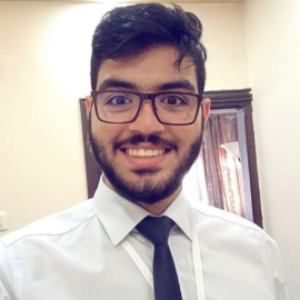Title : Hypoglossal Nerve Stimulation (Baseline Vs. 12 months) for Obstructive Sleep Apnea: A meta-analysis
Abstract:
Background: Obstructive sleep apnea (OSA) is a disorder caused by the repeated collapse of the upper airway during sleep. It is the most common cause of sleep-related breathing disorder, as OSA can cause loud snoring, daytime fatigue, or more severe problems such as high blood pressure, cardiovascular disease, coronary artery disease, insulin- resistant diabetes, and depression. The hypoglossal nerve stimulator (HNS) is an implantable medical device that reduces the occurrence of obstructive sleep apnea by electrically stimulating the hypoglossal nerve in rhythm with the patient's breathing, causing the tongue to move. This stimulation helps keep the patient's airways clear while they sleep. This systematic review and meta-analysis aim to assess the clinical outcome of hypoglossal nerve stimulation as a treatment of obstructive sleep apnea.
Methods: A computer literature search of PubMed, Scopus, Web of Science, and Cochrane Central Register of Controlled Trials was conducted from inception until August 2022. Studies assessing the following clinical outcomes (Apnea-Hypopnea Index (AHI), Epworth Sleepiness Scale (ESS), Functional Outcomes of Sleep Questionnaire (FOSQ), Oxygen Desaturation Indices (ODI), (Oxygen Saturation (SaO2)) were pooled in the meta-analysis using Review Manager Software. We assessed the quality of studies according to the Cochrane risk-of-bias tool for randomized trials (RoB2), Risk of Bias In Non-randomized Studies - of Interventions (ROBINS-I), and a modified version of NOS for the non-comparative cohort studies.
Results: 13 Studies (Six Clinical Trials and Seven prospective cohort studies) with a total of 817 patients were included in the meta-analysis. The results of AHI were reported in 11 studies examining OSA 696 patients. We found that there was a significant improvement in the AHI after 12 months of HNS (MD = 18.2 with 95% CI, (16.7 to 19.7; I2 = 0%); P < 0.00001). Further, 12 studies reported the results of ESS after 12 months of intervention with a significant improvement in the range of sleepiness among the examined 757 OSA patients (MD = 5.3 with 95% CI, (4.75 to 5.86; I2 = 65%); P < 0.0001). Moreover, nine studies involving 699 participants reported the results of FOSQ after 12 months of HNS with a significant reported improvement (MD = -3.09 with 95% CI, (-3.41 to 2.77; I2 = 0%); P < 0.00001). In addition, ten studies reported the results of ODI with a significant improvement after 12 months of HNS among the 817 examined patients (MD = 14.8 with 95% CI, (13.25 to 16.32; I2 = 0%); P < 000001).
Conclusion: The Hypoglossal Nerve Stimulation showed a significant positive impact on the obstructive sleep apnea patients after 12 months of therapy in terms of apnea-hypopnea index, oxygen desaturation indices, manifestations of the behavioral morbidity associated to obstructive sleep apnea and functional status resulting from sleepiness.
Keywords: Apnea, Hypoglossal, Meta-Analysis, Stimulation.
What will audience learn from your presentation?
- We will talk about the pioneering method of hypoglossus nerve stimulation and its effectiveness, as studies have shown its efficiency and effectiveness as a treatment for OSA patients intolerated to CPAP.
- Studies also report subjective improvement in measures of quality of life and continued efficacy of HGNS in the same patients after four years.
- HGNS status is indicated for some patients with moderate to severe obstructive sleep apnea, as determined by an AHI score of 15 to 65. HGNS is currently being studied as an alternative to CPAP for children and Down syndrome adolescents. According to the Food and Drug Administration, people who have previously failed or could not tolerate treatment with positive airway pressure therapies are good candidates for HGNS. In addition, not everyone with obstructive sleep apnea shows the same airway anatomy and tongue collapsibility pattern during sleep. People who sleep with some anatomical patterns are better suited to HGNS than others.
- While CPAP is often recommended as a first-line treatment due to its success, inconsistent use may be caused by the intrusive feel of the mask, set-up time, and cost of the device and parts. Some surgical techniques have been used in OSA patients. Unfortunately, conventional methods of surgery did not improve obstructive sleep apnea in 59% of patients. Unlike other surgeries, HGNS does not require permanent removal or alteration of airway tissue. The hypoglossal nerve is also located anatomically for convenient surgical access and is responsive to stimulation.




